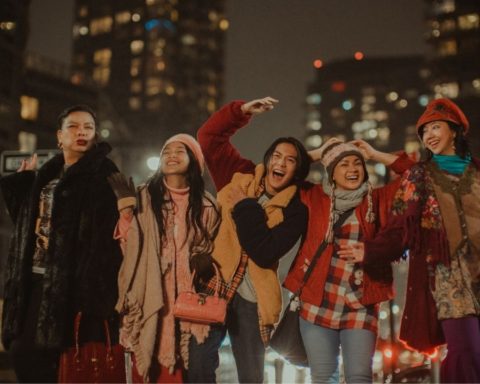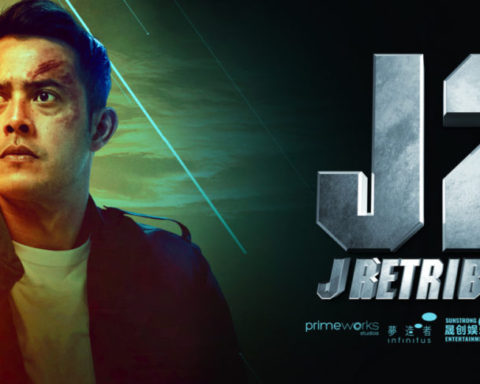Dog breeds go in and out of fashion, their ups and downs often impacted by what people see in movies and on television. Consider, for a moment, the Great Dane. In 1969, when Scooby-Doo, Where Are You! first aired on television, when the world was introduced to Shaggy’s loveable, high-strung, Scooby Snack eating sidekick, the popularity of the breed jumped by a staggering 24 percent. From there, those numbers would steadily increase, reaching their peak in 1980, after the Scooby-Doo and Scrappy-Doo spin-off first appeared on screens.
Since then, however, the popularity of the Great Dane has been in steady decline. This is partly because of a trend towards smaller dogs, but it also has to do with just how much cultural cache Scooby-Doo has lost between its heyday and the dozens of spin-offs, reboots, and godawful live-action direct-to-video movies we’ve been forced to endure since.
Scooby-Doo has never not been on television. Whether through syndication, or by way of one of the 13 different series produced over the last 51 years, he has been a permanent fixture in popular culture. He’s always been there, and yet, his pervasive presence has left little to no impact on the current landscape. In fact, the only time Scooby-Doo was remotely interesting in the last decade, was in 2018, when The CW series Supernatural crossed over with the franchise in the episode “Scoobynatural.”

Which brings me to SCOOB!.
Now, you know exactly the kind of movie this is. It’s the one that materialises ever so often, when rights owners decide that it’s time again to try and flog a dead horse. Not by cleverly reimagining it for a new generation, or even by going old school and doubling down on nostalgia. Instead, they do it by taking a popular property and setting it to whatever template is hot at the moment. In this particular case, it’s catchy tunes, dated pop-culture references, and a couple of dance numbers. I mean, that’s why kids liked that minion movie right? Oh wait, let’s not forget to give it a little superhero spin while we’re at it. Just so we cover all our bases.

SCOOB! begins as something of an origin story. The movie opens with a meet-cute between a young Shaggy and an overly verbose Scooby. We are shown how they come to be in each other’s lives and grow to be best of friends. We witness their first encounter with Fred, Daphne, and Velma, and how, on one Halloween, they solve their very first mystery together.
And then, the movie, by way of Scooby-Doo’s signature theme song and walking montage, flashes forward to the present where the gang is discussing the possibility of growing Mystery Inc. into a proper business.
Simon Cowell shows up (no, really). Bowling pins transform into killer robots. And Scooby and Shaggy are seemingly abducted by a UFO. Or are they? We are now about 15 minutes in and there’s already been an Ira Glass joke, a Ruth Bader Ginsberg joke, and Wonder Woman product placement. Before the movie is over, we’d be subjected to at least half a dozen random cameos, and one incredibly smug joke about how all of this is more important than just “some guy in a rubber mask.”

SCOOB! is a movie without a clue as to its target demographic. If it’s purpose was too introduce the Hanna-Barbera stable of characters to a newer, younger audience, then why write it in a way that requires prior knowledge of who all these characters are, as well as their dynamic in relation to one another?
As a kid, I remember being genuinely thrilled whenever there was a cartoon crossover of some sort. When my favourite characters, from my favourite shows, somehow ended up on adventures together. It would be like watching my toy box come to life, where He-Man fighting alongside Optimus Prime against Max Mayhem and Cobra Commander was a common occurrence.
In SCOOB!, it felt like a bunch of suits at Warner Bros., suddenly aware of all the languishing IPs they owned, decided that they might be able to make a quick buck by haphazardly shoehorning them into a movie that’s centred around the one with the most name recognition. Watching the Scooby gang team-up with Blue Falcon and Dynomutt to fight Dick Dastardly felt more like corporate synergy than an actual adventure into a child’s imagination.
It doesn’t help that the animation is also wildly inconsistent. The opening sequence, which is washed out and lacking any sort of texture, makes Upin & Ipin look cutting edge. The movie then yo-yos between average and uninspired, doing just barely enough to pass muster.
It is lazy writing and even lazier filmmaking. Plain and simple. I think it says something that the only emotional reaction I had watching this was during the end credits, when we got a glimpse of our favourite Hanna-Barbera characters, in all their two-dimensional glory.

Here’s the uncomfortable truth. If you’ve even seen one episode of Scooby-Doo, you’ve seen them all. There is a monotony to this sort of children’s programming that works for a certain age group. Where consistency breeds familiarity which, in turn, results in brand loyalty. It’s why every episode of The Flintstones needs to have Fred saying “Yabba Dabba Doo!” It’s why Shaggy has to go “Zoinks” in every episode of Scooby-Doo.
Now, I’m not saying that Scooby-Doo needs to be elevated in order to appeal to a modern audience. I’m saying it needs to commit to what made it a classic in the first place. An alluring charm. A sense of playfulness, humorously embarrassing slapstick, and great comic timing. And don’t forget the guy in a rubber mask.
SCOOB!
94 minutes
Director: Tony Cervone
Writers: Adam Sztykiel, Jack Donaldson, Derek Elliott, and Matt Lieberman. Based on a story by: Matt Lieberman, Eyal Podell, and Jonathon E. Stewart.
Cast: Will Forte, Mark Wahlberg, Jason Isaacs, Gina Rodriguez, Zac Efron, Amanda Seyfried, Kiersey Clemons, Ken Jeong, Tracy Morgan, Simon Cowell, and Frank Welker












Follow Us